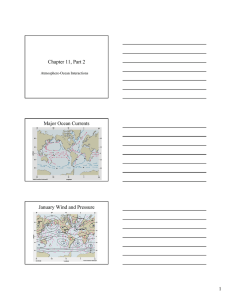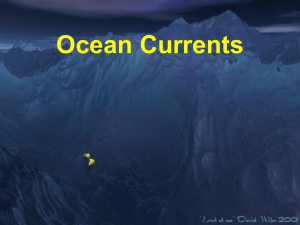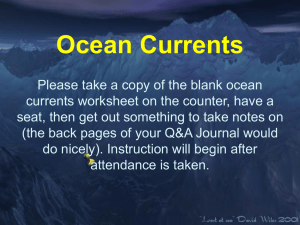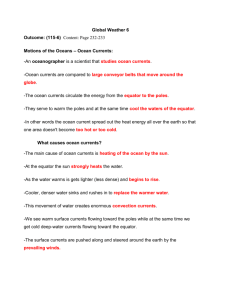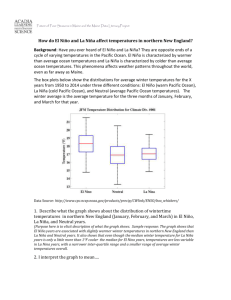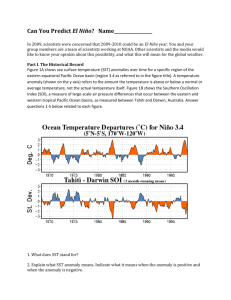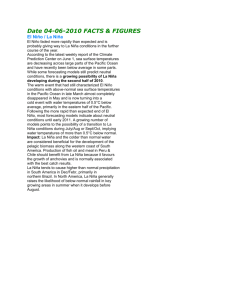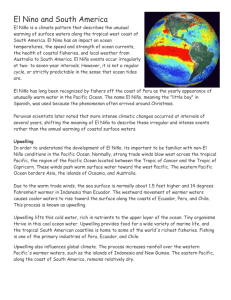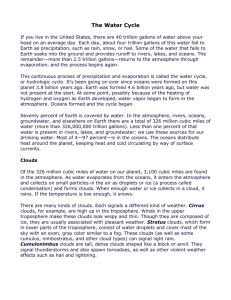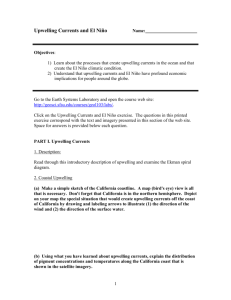Chapter 13 Section 2
advertisement
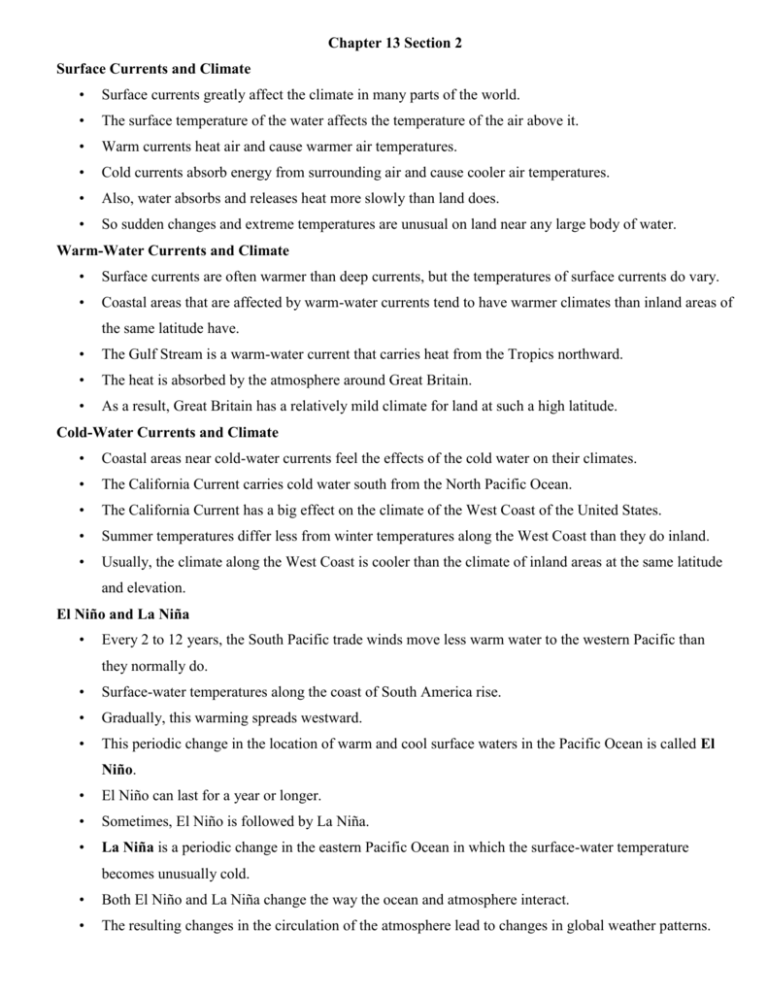
Chapter 13 Section 2 Surface Currents and Climate • Surface currents greatly affect the climate in many parts of the world. • The surface temperature of the water affects the temperature of the air above it. • Warm currents heat air and cause warmer air temperatures. • Cold currents absorb energy from surrounding air and cause cooler air temperatures. • Also, water absorbs and releases heat more slowly than land does. • So sudden changes and extreme temperatures are unusual on land near any large body of water. Warm-Water Currents and Climate • Surface currents are often warmer than deep currents, but the temperatures of surface currents do vary. • Coastal areas that are affected by warm-water currents tend to have warmer climates than inland areas of the same latitude have. • The Gulf Stream is a warm-water current that carries heat from the Tropics northward. • The heat is absorbed by the atmosphere around Great Britain. • As a result, Great Britain has a relatively mild climate for land at such a high latitude. Cold-Water Currents and Climate • Coastal areas near cold-water currents feel the effects of the cold water on their climates. • The California Current carries cold water south from the North Pacific Ocean. • The California Current has a big effect on the climate of the West Coast of the United States. • Summer temperatures differ less from winter temperatures along the West Coast than they do inland. • Usually, the climate along the West Coast is cooler than the climate of inland areas at the same latitude and elevation. El Niño and La Niña • Every 2 to 12 years, the South Pacific trade winds move less warm water to the western Pacific than they normally do. • Surface-water temperatures along the coast of South America rise. • Gradually, this warming spreads westward. • This periodic change in the location of warm and cool surface waters in the Pacific Ocean is called El Niño. • El Niño can last for a year or longer. • Sometimes, El Niño is followed by La Niña. • La Niña is a periodic change in the eastern Pacific Ocean in which the surface-water temperature becomes unusually cold. • Both El Niño and La Niña change the way the ocean and atmosphere interact. • The resulting changes in the circulation of the atmosphere lead to changes in global weather patterns. • Scientists can predict weather changes on land that might be caused by El Niño by studying the atmosphere and ocean. • Because El Niño occurs every 2 to 12 years, studying and predicting this phenomenon can be difficult. • However, it is important for scientists to learn as much as possible about El Niño because of its effects on organisms and land. • One way scientists collect data to predict El Niño is through a series of buoys anchored to the ocean floor along Earth’s equator. • The buoys record data about water temperature, air temperature, currents, and winds. • Buoys sometimes report that South Pacific trade winds are weaker than usual. • Buoys may also report that the surface temperatures of the tropical oceans have risen. • If either of these changes happens, scientists can predict that an El Niño is likely to occur. Effects of El Niño • El Niño can alter weather patterns enough to cause disasters in many parts of the world. • Flash floods and mudslides may occur in areas that normally receive little rain. • These areas include Peru and the southern half of the United States. • Regions that normally receive a lot of rain may experience droughts. • Droughts are unusually long periods during which rainfall is below average. • Periods of severe drought can lead to crop failure. • During El Niño, severe droughts can occur in Indonesia and Australia. Upwelling • At times, local winds blow toward the equator along the northwest coast of South America and the west coast of North America. • This wind causes local surface currents to move away from the shore. • The warm surface water is replaced by cold, nutrient-rich water from the deep ocean in a process called upwelling. • Upwelling is extremely important to ocean life. • The nutrients that are brought to the surface of the ocean support the growth of plankton. • These tiny plants and animals support other organisms, such as fish and seabirds. • On the California coast, upwelling is usually strongest from March to September. • Some weather conditions, including El Niño, can interrupt the process of upwelling. • When upwelling is reduced, the richness of the ocean life at the surface is also reduced.
